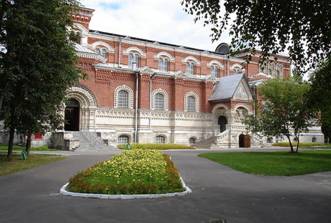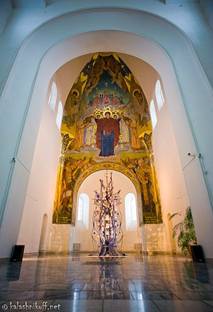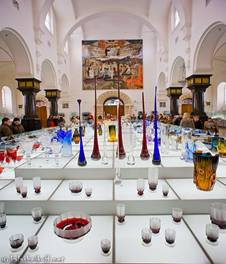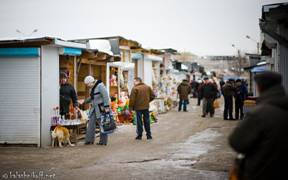

| Home | Our Leadership | Our Economies | Our Wars | Our Perspectives | Our Culture | Links | About |
By Helen Potapova

What is Gus-Khrustalny? An almost unnoticeable spot on the map of huge Russia, and one among the most ancient and scenic Russian towns. Its name in English means Crystal Goose. Actually this provincial place is known only for its glass production. Furthermore the world-known glass factory in Gus-Khrustalny is virtually the only source of jobs for its residents. Like in Tacoma, there is a museum of glass. But in Gus-Khrustalny it’s not just ordinary glass, but crystal. The best factory productions and works of local artists are represented there.

 The Museum of Crystal Glassware founded in 1983 is considered to be the main tourist attraction in Gus-Khrustalny. It is situated in the magnificent building of St. George Cathedral built by famous Russian architect - Leonty Benois. As it was a cathedral initially, several religious images have remained on its walls. One of them is "The Last Judgement" by Victor Vasnetsov. Another is the impressive mosaic "In Thee Rejoiceth All Creation" by the master craftsman, Vladimir Frolov.
The Museum of Crystal Glassware founded in 1983 is considered to be the main tourist attraction in Gus-Khrustalny. It is situated in the magnificent building of St. George Cathedral built by famous Russian architect - Leonty Benois. As it was a cathedral initially, several religious images have remained on its walls. One of them is "The Last Judgement" by Victor Vasnetsov. Another is the impressive mosaic "In Thee Rejoiceth All Creation" by the master craftsman, Vladimir Frolov.
Various crystal figures, colorful vases and rows of drinking glasses look a bit strange against these masterpieces of religious art. But they supplement each other as well. Light from the ancient chandeliers is reflected in the glass facets and illuminates the icons. So, the eclectic Museum of Crystal Glassware in Gus-Khrustalny seems to be a symbol of town’s contrasting essence.
 The neighborhood of such a gorgeous building and a dirty marketplace provokes contrasting impressions as well. There are almost the same traditional crystal geese, glasses and vases in the marketplace as in the museum.
The neighborhood of such a gorgeous building and a dirty marketplace provokes contrasting impressions as well. There are almost the same traditional crystal geese, glasses and vases in the marketplace as in the museum.
“How much?” I ask one of the sellers taking a crystal goose.
“Two hundred rubles.”
“Maybe one hundred eighty?”
“No, I make them myself at night in my garage! Can you imagine how difficult it is?”
“Ok, one hundred ninety! That’s my last word.”
“You really like it?” he asks me with a sly smile.
“It’s very nice…”
“You’ve persuaded me! Take it for one hundred fifty!”
That’s the usual way of dealing at Russian markets.
 The irony is that those who create crystal works for the local museum and those who sell modest crystal geese at the local market are mostly the same residents of Gus-Khrustalny.
The irony is that those who create crystal works for the local museum and those who sell modest crystal geese at the local market are mostly the same residents of Gus-Khrustalny.
We should look for the roots of such situation in 1990s. At that time a new “trend” was born in Russian provincial towns: to give workers their wages in those things that they’ve produced. We can hardly imagine this way of dealing in Tacoma, can we?
This tradition hasn’t died. It appears here and there in Russia from time to time, and Gus-Khrustalny is not an exception. “I was given six boxes with crystal dinner sets instead of my wages for the last three months,” said Galina, who both sells at the market and works at the glass factory.
 For such unlucky workers as Galina, the only way to get some money is to sell at the local market those crystal things which she is given as wages. As for single craftsmen, who don’t work at the factory, they have to make crystal swans in their own garages and sell them. But these talented people stay quite poor in spite of their efforts. They keep on selling at the market while their crystal creations delight visitors from all over the world at the local Museum of Crystal Glassware.
For such unlucky workers as Galina, the only way to get some money is to sell at the local market those crystal things which she is given as wages. As for single craftsmen, who don’t work at the factory, they have to make crystal swans in their own garages and sell them. But these talented people stay quite poor in spite of their efforts. They keep on selling at the market while their crystal creations delight visitors from all over the world at the local Museum of Crystal Glassware.